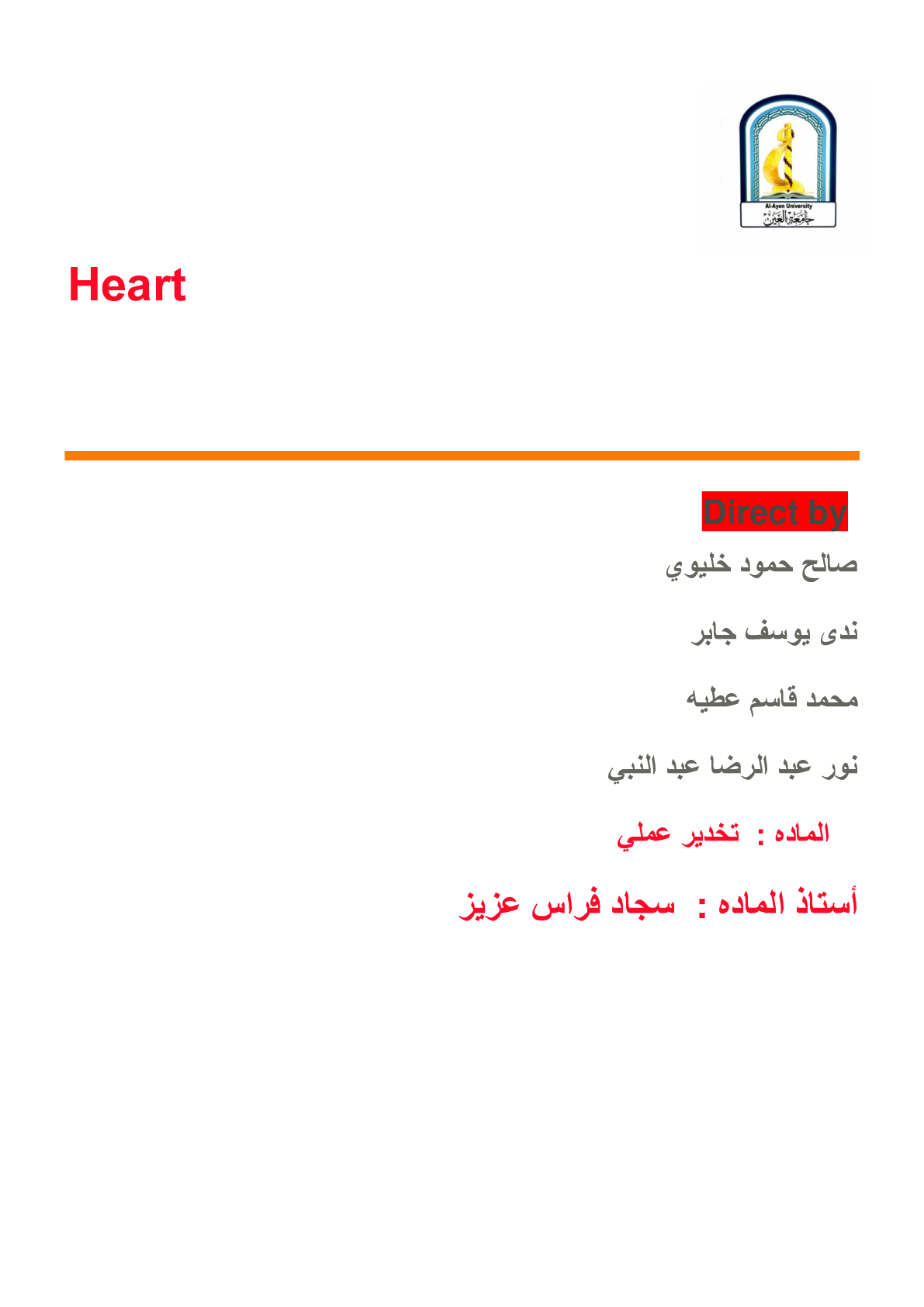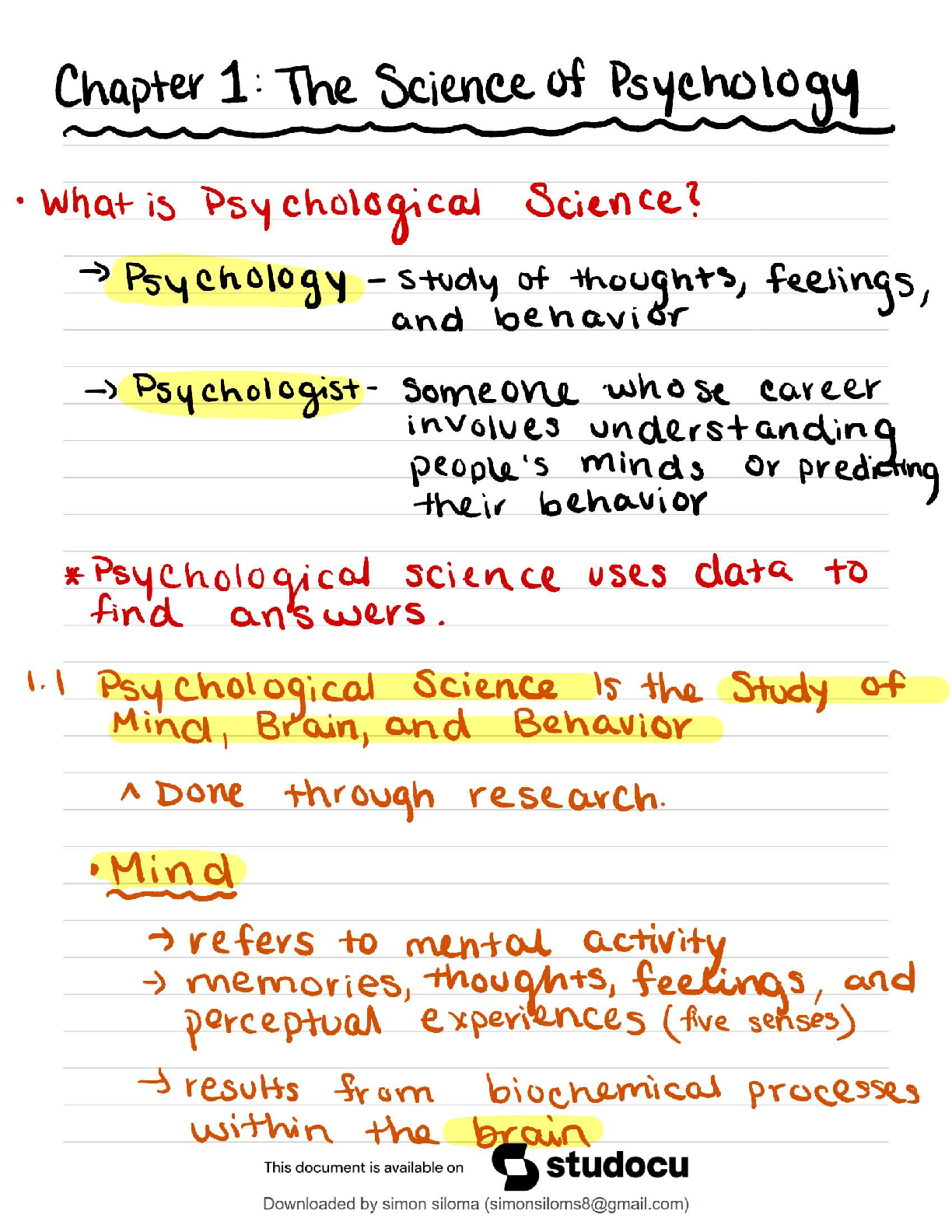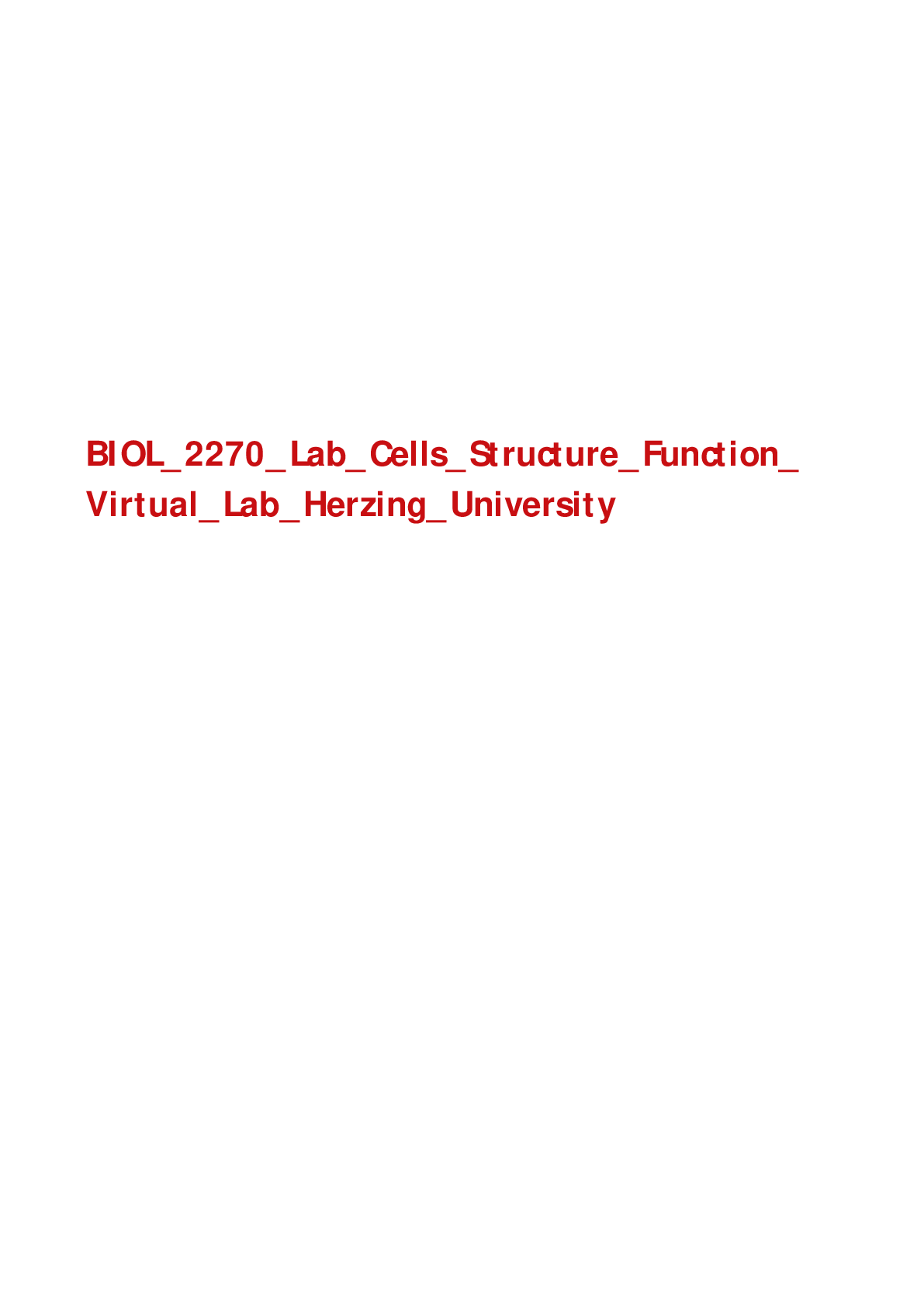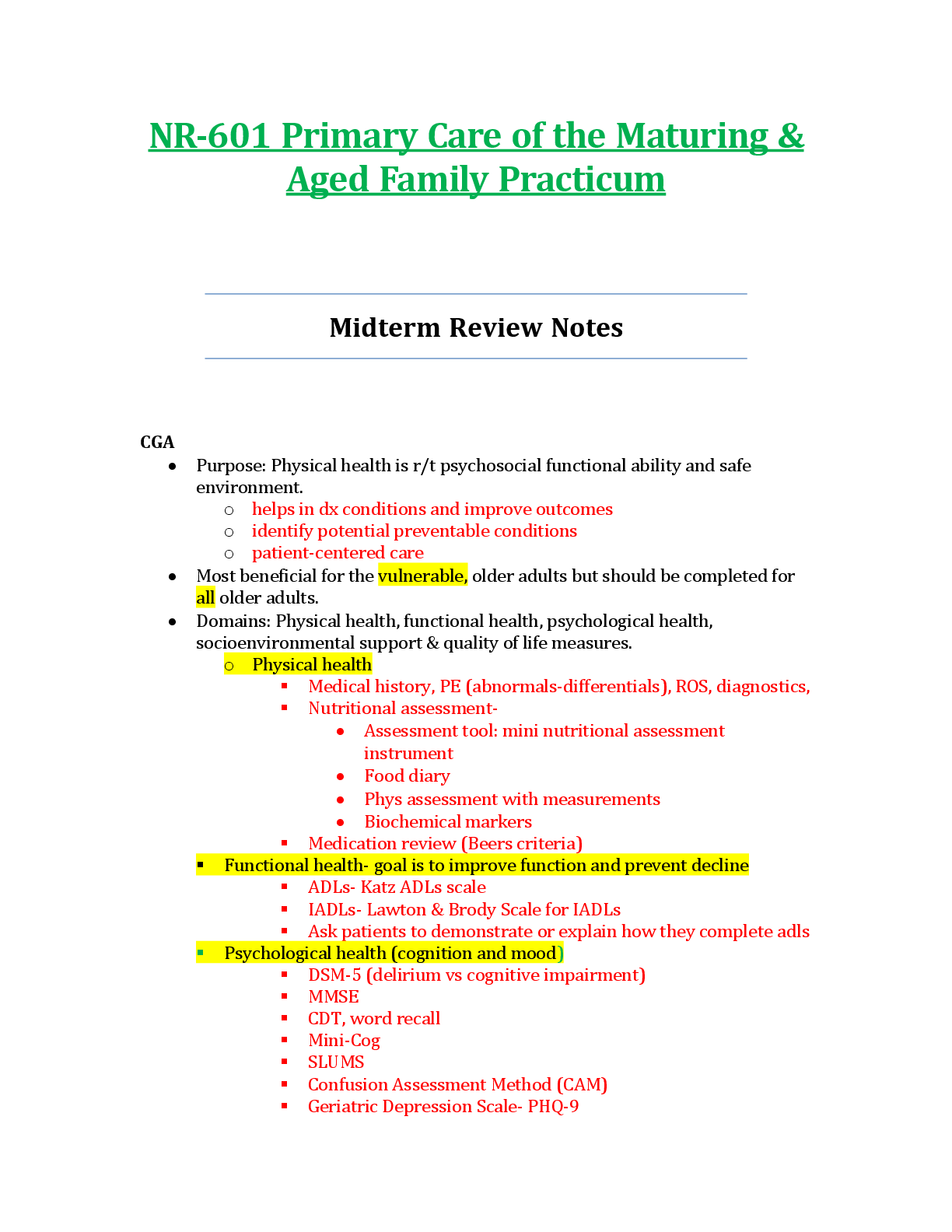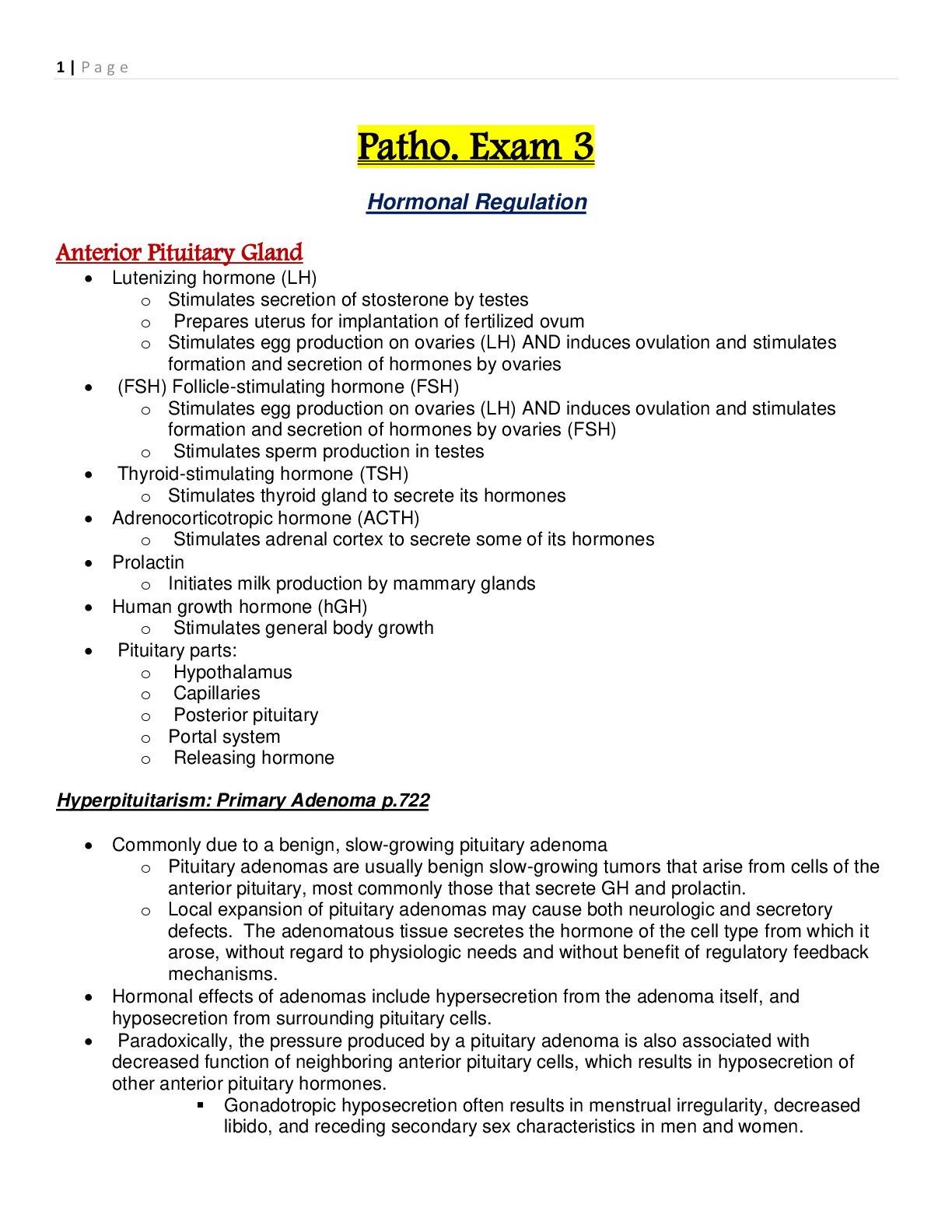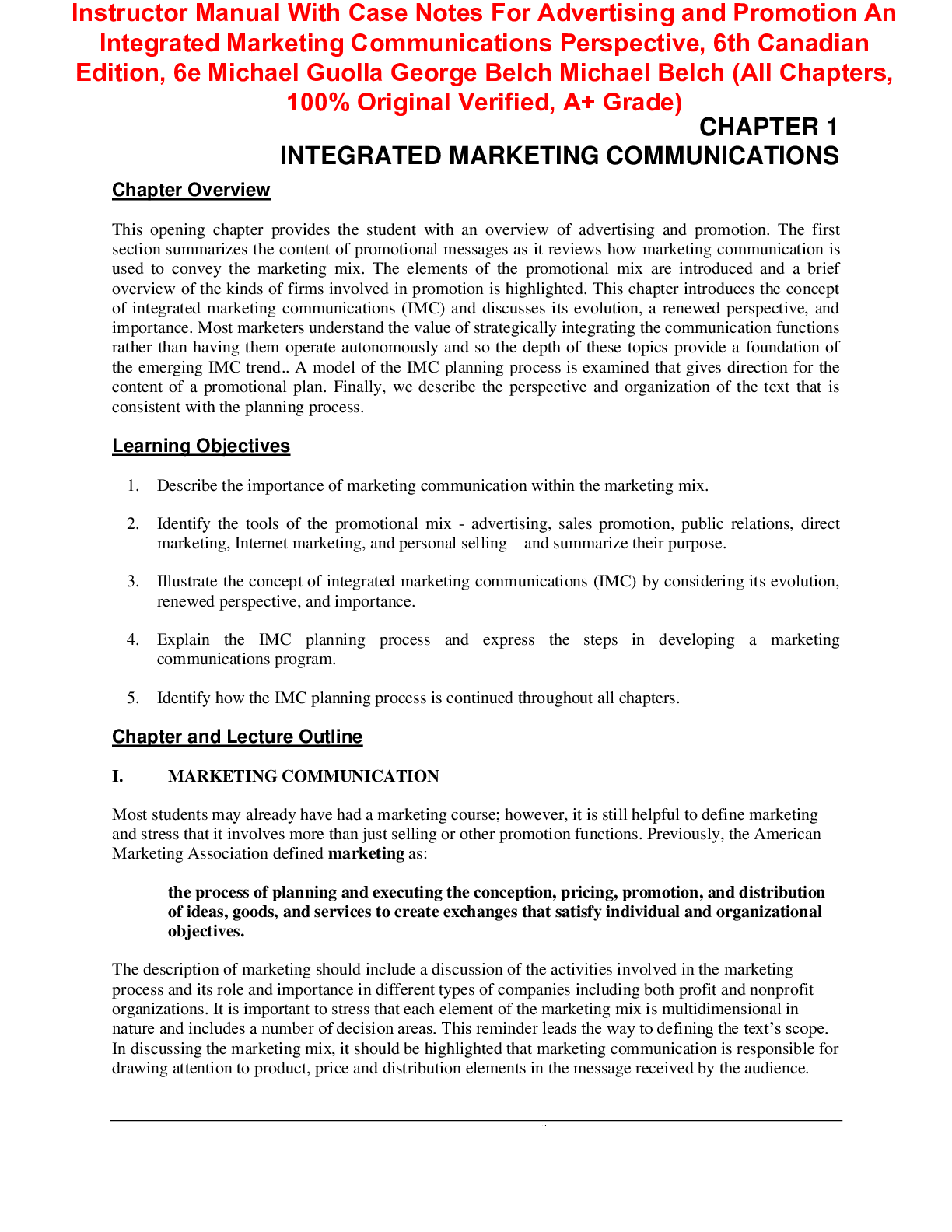*NURSING > Study Notes > Anaesthesia: The Heart (All)
Anaesthesia: The Heart
Document Content and Description Below
The heart is a muscular organ in most animals, which pumps blood through the blood vessels of the circulatory system.[1] The pumped blood carries oxygen and nutrients to the body, while carrying metab ... olic waste such as carbon dioxide to the lungs.[2] In humans, the heart is approximately the size of a closed fist and is located between the lungs, in the middle compartment of the chest Function he endocardium, which is primarily made up of endothelial cells, controls myocardial function. This modulating role is separate from the homeometric and heterometric regulatory mechanisms that control myocardial contractility. Moreover, the endothelium of 3 the myocardial (heart muscle) capillaries, which is also closely appositioned to the cardiomyocytes (heart muscle cells), is involved in this modulatory role. Thus, the cardiac endothelium (both the endocardial endothelium and the endothelium of the myocardial capillaries) controls the development of the heart in the embryo as well as in the adult, for example during hypertrophy. Additionally, the contractility and electrophysiological environment of the cardiomyocyte are regulated by the cardiac endothelium. The endocardial endothelium may also act as a kind of blood–heart barrier (analogous to the blood–brain barrier), thus controlling the ionic composition of the extracellular fluid in which the cardiomyocytes bathe e heart has four chambers: In humans, other mammals, and birds, the heart is divided into four chambers: upper left and right atriaand lower left and right ventricles.[4][5] Commonly the right atrium and ventricle are referred together as the right heart and their left counterparts as the left heart.[6] Fish, in contrast, have two chambers, an atrium and a ventricle, while reptiles have three chambers.[5] In a healthy heart 4 blood flows one way through the heart due to heart valves, which prevent backflow.[3] The heart is enclosed in a protective sac, the pericardium, which also contains a small amount of fluid. The wall of the heart is made up of three layers: epicardium, myocardium, and endocardium. The cardiac skeleton is made of dense connective tissue and this gives structure to the heart. It forms the atrioventricular septum, which separates the atria from the ventricles, and the fibrous rings, which serve as bases for the four heart valves.[20] The cardiac skeleton also provides an important boundary in the heart's electrical conduction system since collagen cannot conduct electricity. The interatrial septum separates the atria, and the interventricular septum separates the ventricles.[7] The interventricular septum is much thicker than the interatrial septum since the ventricles need to generate greater pressure when they contract. [Show More]
Last updated: 6 months ago
Preview 4 out of 15 pages

Loading document previews ...
Buy this document to get the full access instantly
Instant Download Access after purchase
Buy NowInstant download
We Accept:

Also available in bundle (1)
Click Below to Access Bundle(s)

A PACKAGE DEAL FOR ANESTHESIA EXAMS WITH ANSWERS ,CLASS NOTES,SUMMARIES, LABS AND ALL OTHER RELATED ANESTHESIA REVIEW MATERIAL 2023
A PACKAGE DEAL FOR ANESTHESIA EXAMS WITH ANSWERS ,CLASS NOTES,SUMMARIES, LABS AND ALL OTHER RELATED ANESTHESIA REVIEW MATERIAL 2023
By EXCELLENCE NURSING LIBRARY 2 years ago
$393
29
Reviews( 0 )
$9.00
Can't find what you want? Try our AI powered Search
Document information
Connected school, study & course
About the document
Uploaded On
Dec 06, 2023
Number of pages
15
Written in
All
Additional information
This document has been written for:
Uploaded
Dec 06, 2023
Downloads
0
Views
104

